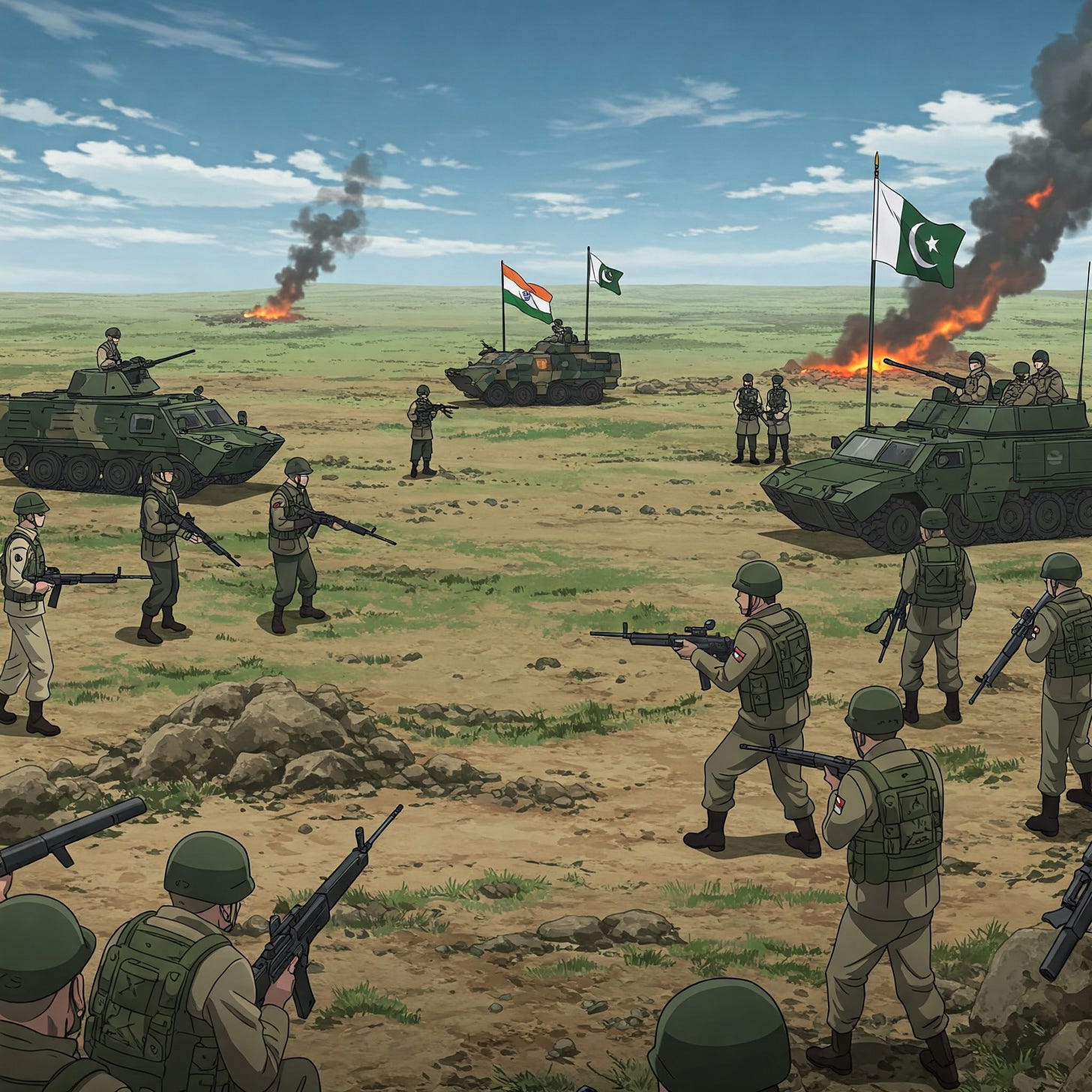India-Pakistan war could start "in 2 or 3 days"
and other updates on Kashmir attack
Hey there, welcome to Tuesday’s edition.
standing on the edge of something far more serious. India and Pakistan, two nuclear-armed neighbors, are once again facing rising tensions that could lead to conflict.
Let’s take a closer look at what’s happening and why the next few days could matter to the whole world.
⚠️ Kashmir is on fire: “There is an immediate threat”
That chilling warning comes straight from Pakistan’s Defense Minister, Khawaja Muhammad Asif, who told Geo News, “If something has to happen, it will happen in two or three days.”
He described the situation as “crucial,” with China, Saudi Arabia, and Gulf states trying to prevent conflict after last week’s deadly attack in Indian-administered Kashmir that left 26 people, many of them tourists, dead.
India didn’t hold back.
Prime Minister Narendra Modi, in a fiery statement, pledged to hunt down and “punish those responsible.”
India labeled the killings an act of terrorism, squarely blaming Pakistan for harboring those behind it.
In response, New Delhi downgraded diplomatic ties, suspended a key water-sharing treaty, and expelled Pakistani diplomats.
Pakistan, denying any involvement, hit back shutting its airspace to Indian airlines, cutting trade, and expelling Indian officials from Islamabad.
Now, about the airspace ban. How is it affecting India?
Last Thursday, Pakistan shut its airspace to Indian carriers, forcing airlines like Air India, IndiGo, Akasa Air, and SpiceJet to take longer, costlier detours on westbound routes to Europe, North America, Central Asia, and the Middle East.
For some flights, it means adding a refueling stop; for others, temporary suspension.
IndiGo says around 50 routes could be impacted. Flights to Kazakhstan and Uzbekistan have already been paused.
Air India, meanwhile, is rerouting several flights and made headlines over the weekend when its non-stop New Delhi–New York flight had to refuel in Copenhagen, arriving nearly six hours late.
📌 But, this isn’t just about travel time. It’s about economics. Longer routes = more fuel = higher costs.
The timing couldn’t be worse.
India’s aviation sector is on the rise, expected to grow 15% over the next decade, but this airspace standoff could temporarily dampen momentum.
Indian carriers operate 9,000+ international flights this month. Half of all outbound travel in 2023 was to the Middle East — a region now trickier to reach.
But will you pay more as a passenger?
Experts say: probably not. John Grant of OAG calls the move “symbolic” more than “disruptive.” Airlines might bear the brunt, at least for now.Flights to Srinagar are being refunded or rescheduled through May 7. Ironically, airfares have dropped — flights once selling for $255 now go for as low as $150. But there's a dark reason: fear.
Journalist Muheet Ul Islam, based in Kashmir, says the region is now "pin-drop silent." Tourists are fleeing. Locals who invested in the booming travel sector are staring at losses.
"Some tourists told me they will never return to Kashmir again."
In times like these, it’s not just geopolitics that gets turbulent — it’s the people who pay the price.
So, that’s it for today. If you enjoyed this edition, subscribe to hear from us every day!
See ya 👋



It is good in a way . People within the country can travel by train etc . More people even international Indian travelled for fun without any purpose . There are so many people ( parents ) here in US in my group who come to USA twice a year to see their children .If they can spend more they can travel but if not give the genuine travelers a chance to travel comfortably and within a budget . Remember we lived when flight were few and far between and we are still alive . This will give airlines chance to realign themselves
The intent to start a war began on the day of attack. hate attack is not just unfortunate, but bad system to uphold in humanity. The complexities of bad issues after effect consequences affect everyone.